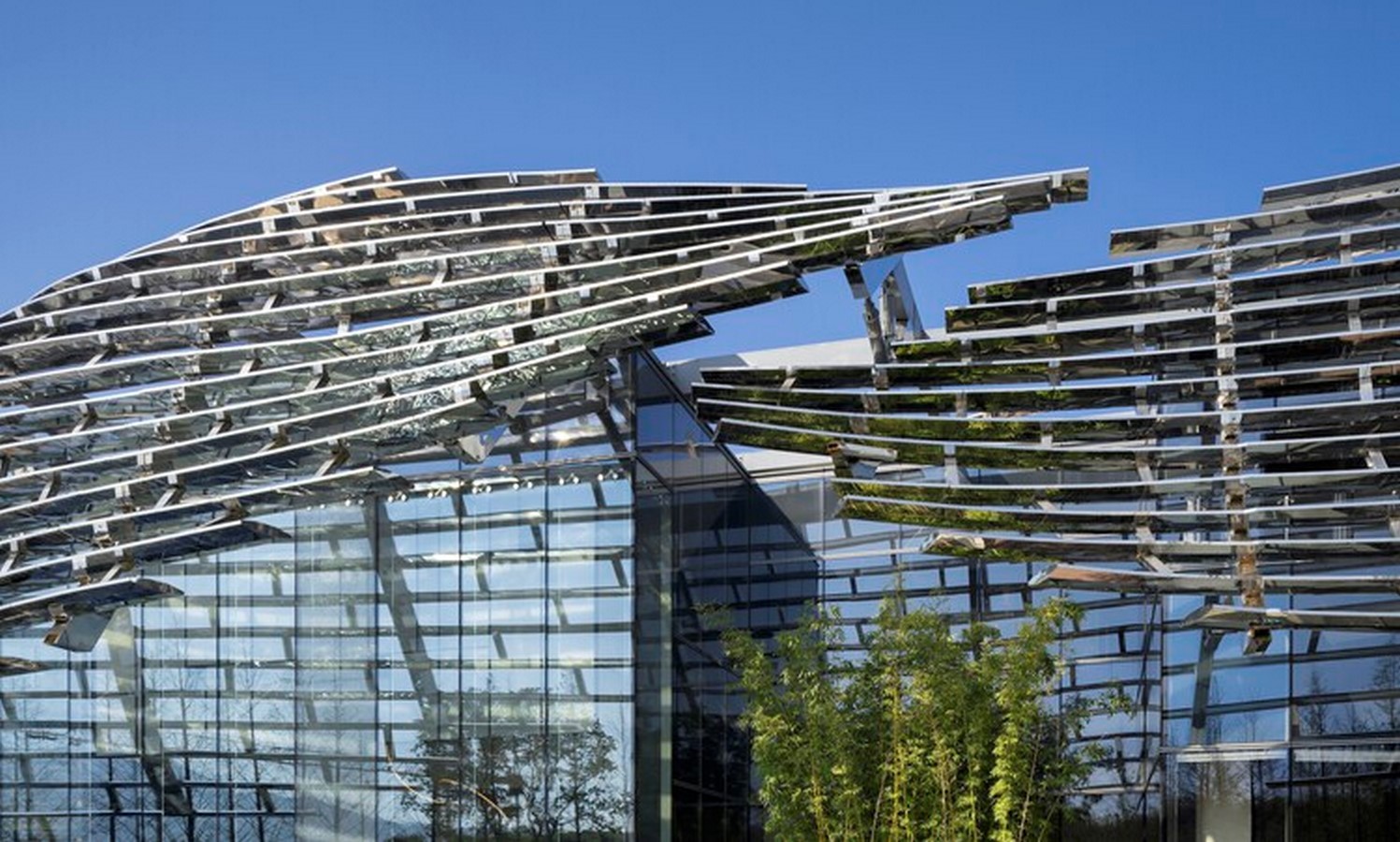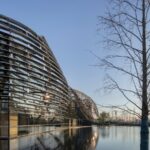Yuan Architects, under the leadership of Wenyuan Peng, has ventured into redefining architectural impressions with their latest project, the Nanjing Art Center. Situated adjacent to the Nanjing Tiebei City Park, this architectural marvel spanning 1400 m² stands as a testament to the fusion of mixed-use, cultural, and public architecture seamlessly integrated into one.

A Departure from Rigidity
The design ethos behind the Nanjing Art Center is a departure from the rigidity often associated with conventional structures. Instead, Yuan Architects sought to imbue the building with an organic form reminiscent of a sea of clouds, reflecting a natural harmony.
Elements of Design
The architectural composition comprises two fundamental elements: a staggered and stacked volume of semi-reflective, translucent glass boxes, and horizontal, transparent metal shutter sheets. While the former meets functional requirements and signifies the building’s static rationality, the latter, resembling a “flowing sea of clouds,” provides dynamic sensibility, shading from the sun.

Interplay of Elements
The relationship between these elements mirrors the codependence between clothing and bodies, creating an intermediary space that is richly expressive. This spatial aesthetic fosters a multi-layered sense of outward extension and natural interactions, shifting gracefully with changing light.
Fluidity and Poeticism
The architectural impression of the Nanjing Art Center transcends conventional boundaries. It is not merely a silhouette but an intricate interplay of time, light, and shadow. It embodies a fluid exchange between illusion and reality, akin to a cloud drifting across a water surface.

Architecture as Landscape
Yuan Architects’ creation blurs the lines between architecture and landscape, exuding elegance and silence simultaneously. Amidst purity, one finds sensations of life, and within ambiguity, the existence of time is keenly felt.
In essence, the Nanjing Art Center stands as a beacon of innovation, pushing the boundaries of architectural design and inviting viewers to perceive space in a new light.





























